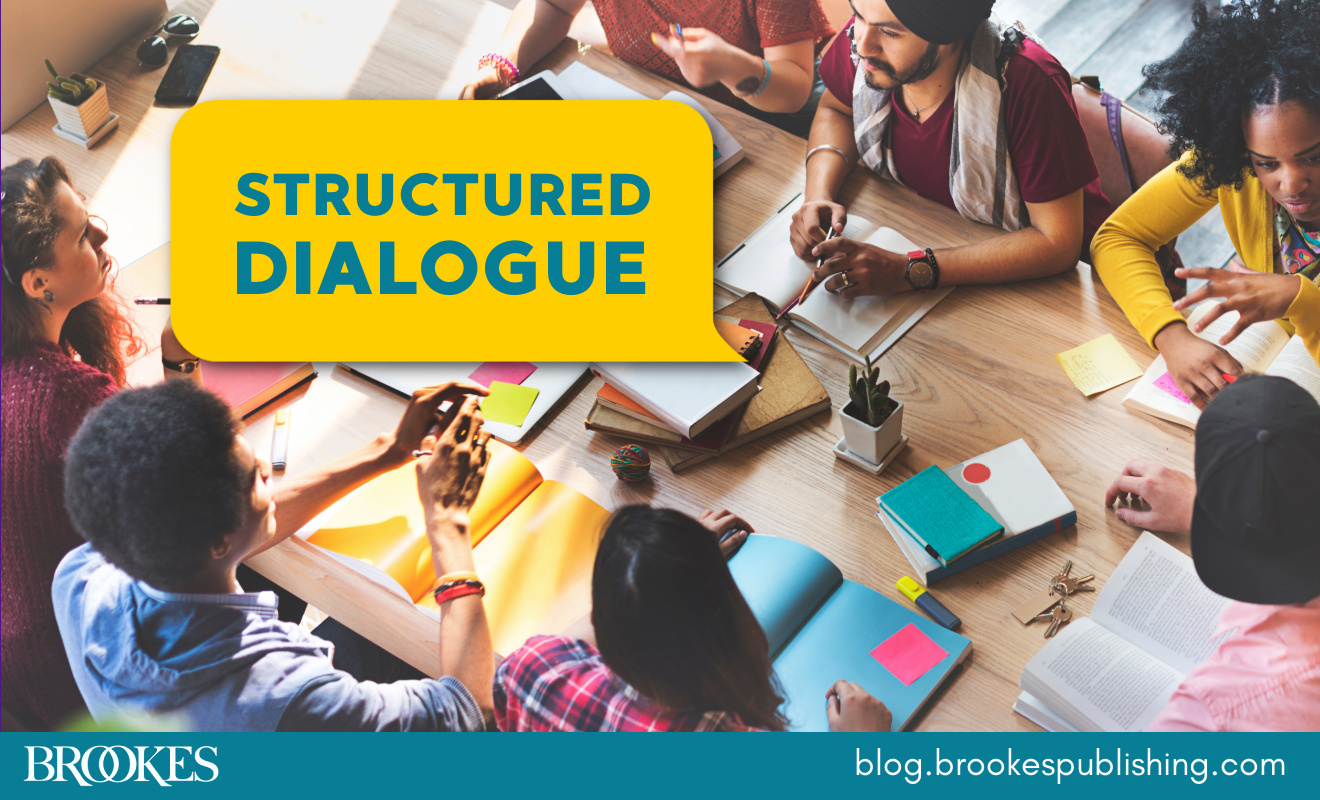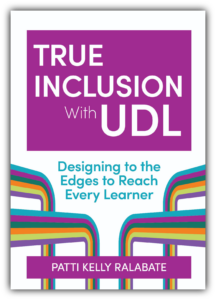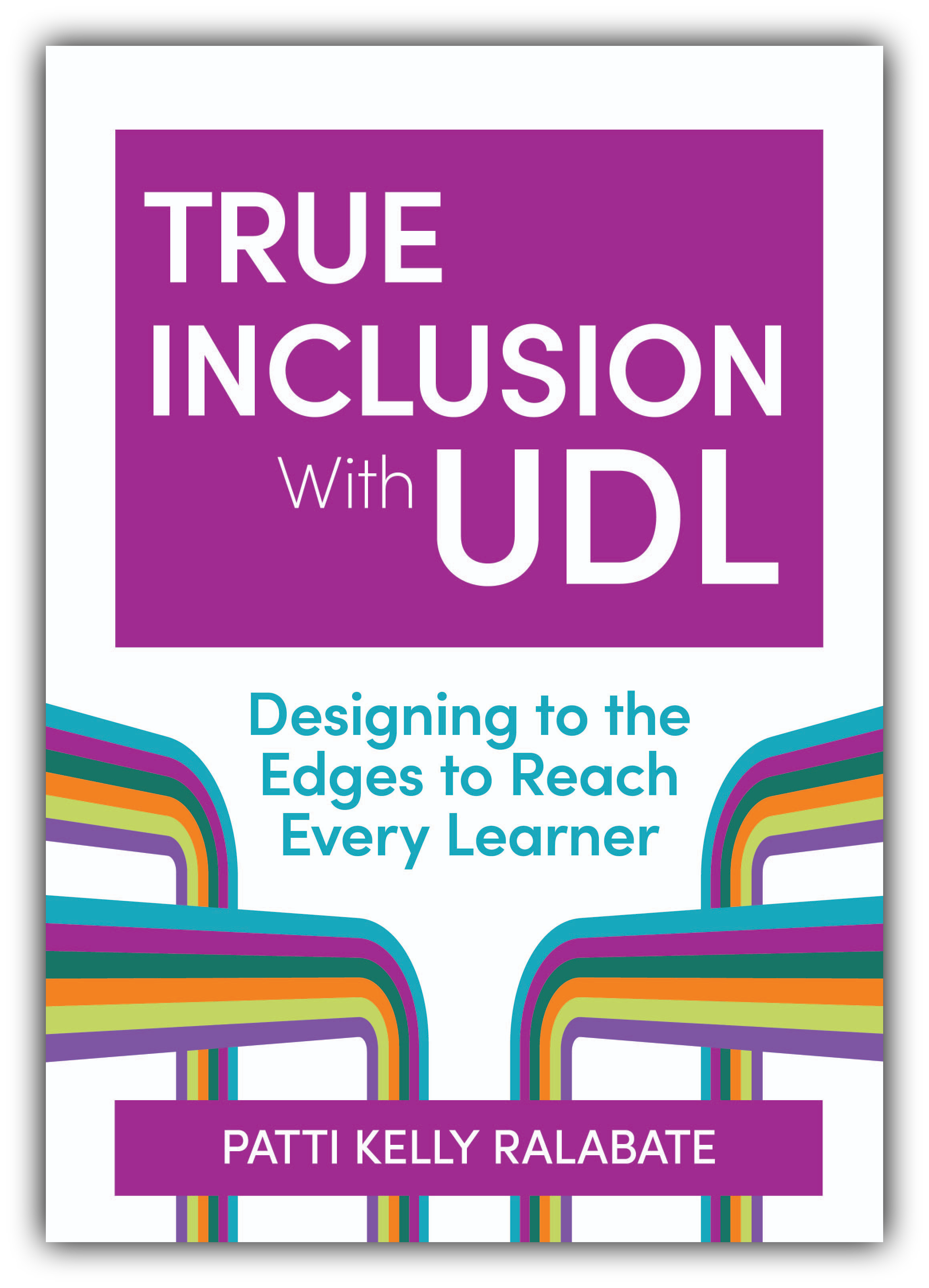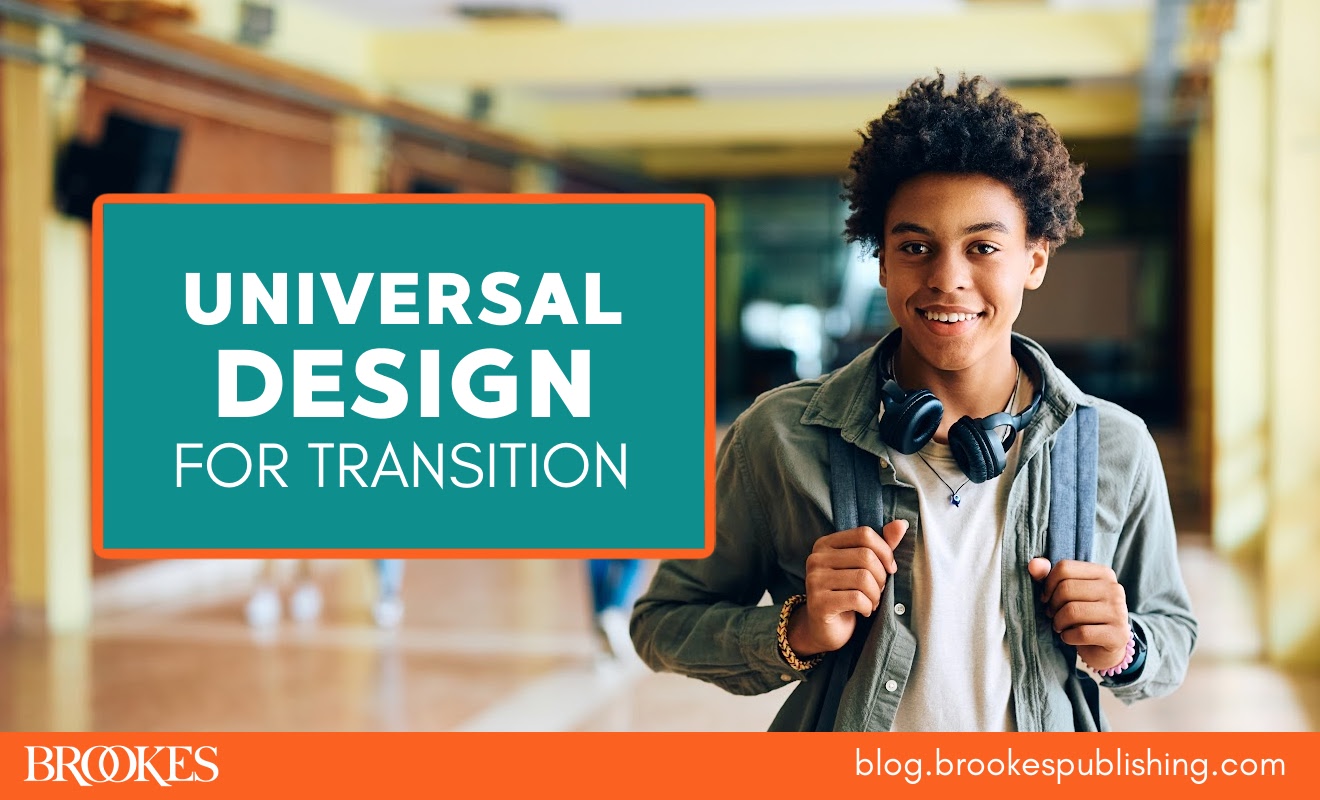Structured Dialogue: An 8-Step Process for Planning Authentic Inclusion
April 25, 2024
 Today’s post is excerpted and adapted from True Inclusion with UDL: Designing to the Edges to Reach Every Learner, by Patti Kelly Ralabate, Ed.D.
Today’s post is excerpted and adapted from True Inclusion with UDL: Designing to the Edges to Reach Every Learner, by Patti Kelly Ralabate, Ed.D.
Structured dialogue is a mechanism for developing shared knowledge and problem solving. It’s also an appropriate process for devising a mutually agreed-upon implementation plan for inclusive education.
Based on the work of Alexander “Aleco” Christakis, driven by scientific methodology, and guided by skilled facilitators, structured design process involves a deep, honest conversation and free exchange of views (Christakis & Bousch, 2006). It’s characterized by inclusive, productive dialogue that encourages participants to listen with the purpose of understanding rather than advocating, debating, or convincing others of their point of view.
Here’s how a Massachusetts high school team—with a shared vision of creating true inclusive learning options—used an eight-step structured dialogue process to develop an implementation plan for inclusion.
Step 1: Activate
Typically, conversation is activated by an open-ended question designed to elicit pertinent comments and lead to an agreed-upon definition of the issue. It’s important to carefully develop the question to engage participants and generate a relevant discussion. The question posed for everyone at the high school team meeting was: What are implicit and overt issues that need to be addressed in order to create true inclusive learning options? All responses were captured, recorded, and clarified for meaning.
Step 2: Cluster
Each response to the open-ended question was examined in relation to other responses to determine if relationships existed between them. Responses that were related to each other were categorized into affinity clusters. For example, “lack of guidance about what teachers can do” and “lessons aimed at high achievers” were categorized together in an affinity cluster labeled “Professional Skills.” Responses such as “not enough culturally relevant resources” and “limited budget” were categorized under an affinity cluster labeled “Resources.”
Step 3: Prioritize
Participants then selected the top five most important affinity cluster categories through a simple voting process. Each participant was given five colored dots and asked to place one dot next to each of the affinity clusters they considered to be most important. The five affinity clusters that received the most votes moved ahead, and the others were put aside.
Step 4: Leverage
At this point, the group looked for items that had leveraging value by considering items under each of the prioritized affinity clusters in relation to each other. In other words, if they addressed item A, would it help resolve any other issues? For example, the group agreed that funding for professional learning had leveraging value and could influence how they addressed both “Professional Skills” and “Resources.” In this way, impactful items were identified as leverage points, redundant items were consolidated, and less influential items were sidelined or discarded.
Step 5: Generate
After looking for leverage points while keeping in mind the preceding discussion, the group considered a new question focused on potential resolutions. Their new question was What options will contribute significantly to our shared vision of truly inclusive learning? Again, all responses were captured and displayed.
Step 6: Compare
During this step, the group examined two alternatives simultaneously against specified criteria, such as cost, implementation time, and long-term impact. The group broke into smaller groups of three to four participants to allow everyone the opportunity to share their thinking. Each small group summarized and posted their discussion on a large sheet of paper, and the entire group used a gallery walk to view all the summaries.
Step 7: Prioritize
At this point, prioritizing the alternatives allowed the full group to judge the relative potential of each option presented in the group summaries. This was similar to Step 3 but was focused on the alternative options, rather than the initial list of issues. Group participants used specified criteria to assign points to each option in a weighted fashion. Preferred alternatives were assigned three points if participants believed they would be most impactful. Using this approach, the group’s preferred options quickly emerged.
Step 8: Leverage
Starting with the preferred and potentially most impactful alternatives, the group made a final decision about which options they felt were leverage points and which option they wanted to pursue as their goal. In the end, the staff decided to support the establishment of professional learning teams focused on creating inclusive curriculum and instructional resources available to the entire staff. To accomplish this goal, they also agreed to pool departmental funding to develop joint professional learning and supplemental materials. Connecting initial issues and final options to underlying assumptions, core values, and beliefs offered crucial context and strengthened staff ownership going forward.
You and your staff can employ a similar approach in your own school as you plan communities that are welcoming, respectful, engaging, and safe for every learner. For more guidance on working as a team to implement authentic inclusion, get your copy of True Inclusion with UDL.
Reference
Christakis, A. N., & Bousch, K. (2006). How people harness their collective wisdom and power to construct the future in co-laboratories of democracy. Information Age Publishing.





Write a Comment
Your email address will not be published. Required fields are marked *
Post a Comment